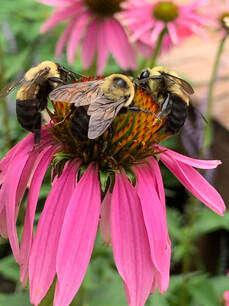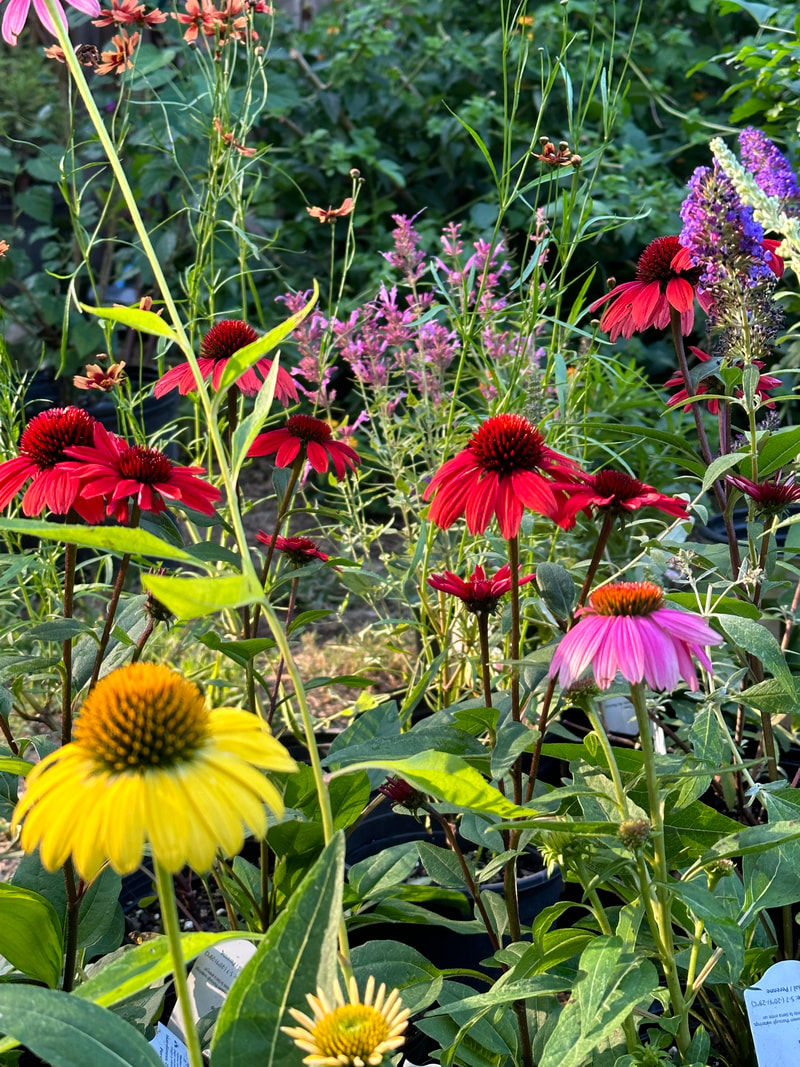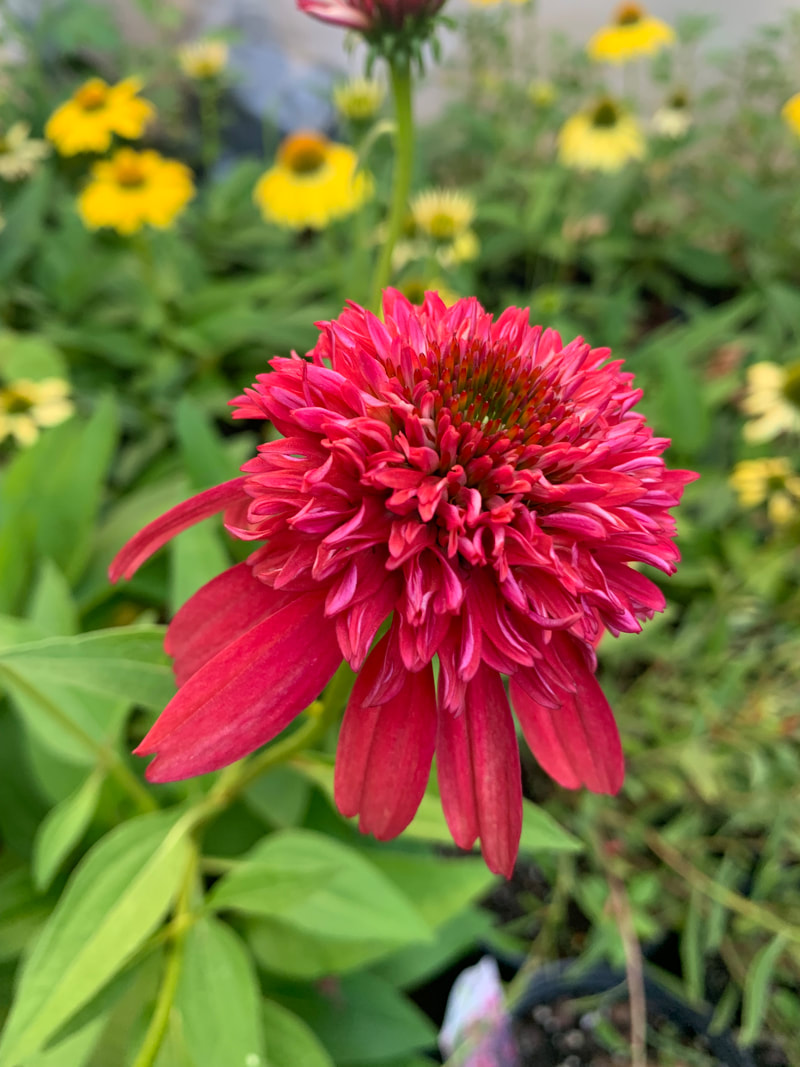Echinacea (Coneflower)
|
Echinacea, also known as coneflower, is a popular native plant in North Carolina and is often considered an excellent choice for a variety of reasons:
1. Native Habitat: Many species of coneflowers are native to North America, making them well-suited to local ecosystems. Planting native species can help support local wildlife and pollinators. 2. Attractive Blooms: Coneflowers are known for their colorful and distinctive daisy-like flowers, which come in a range of hues, including shades of pink, purple, and white. They are aesthetically pleasing and can enhance the beauty of gardens. 3. Low Maintenance: Coneflowers are relatively low-maintenance plants. They are drought-tolerant once established, making them suitable for various climates. They require minimal care, making them a good choice for both experienced and novice gardeners. 4. Wildlife-Friendly: The nectar-rich flowers of coneflowers attract pollinators, such as bees and butterflies. Birds, like goldfinches, may also feed on the seed heads, providing food and habitat for wildlife. 5. Medicinal Uses: Some species of Echinacea have traditional medicinal uses. They are believed to have immune-boosting properties and are used in herbal remedies. 6. Long Blooming Season: Coneflowers typically have a long blooming season, providing continuous color in the garden from summer into fall. 7. Cut Flowers: The long-lasting, sturdy flowers make great cut flowers for floral arrangements. 8. Variety: There are several species and cultivars of coneflowers available, offering a variety of flower colors and plant sizes to choose from. 9. Erosion Control: Their deep root systems can help with erosion control, making them suitable for slopes or areas prone to soil erosion. |




